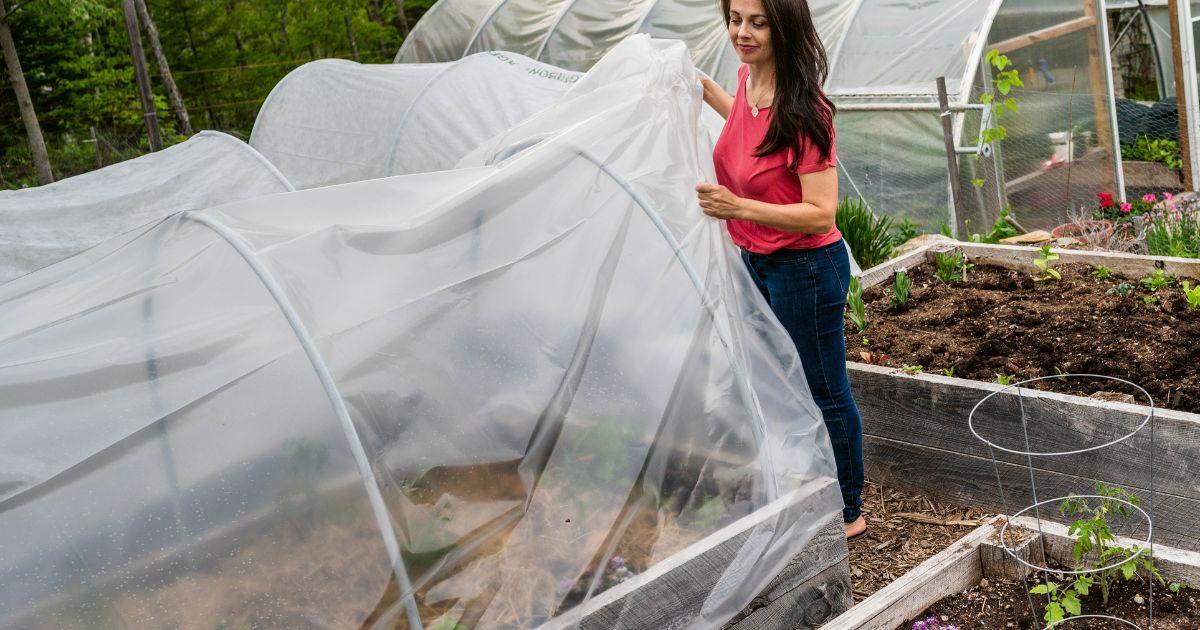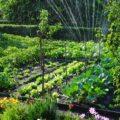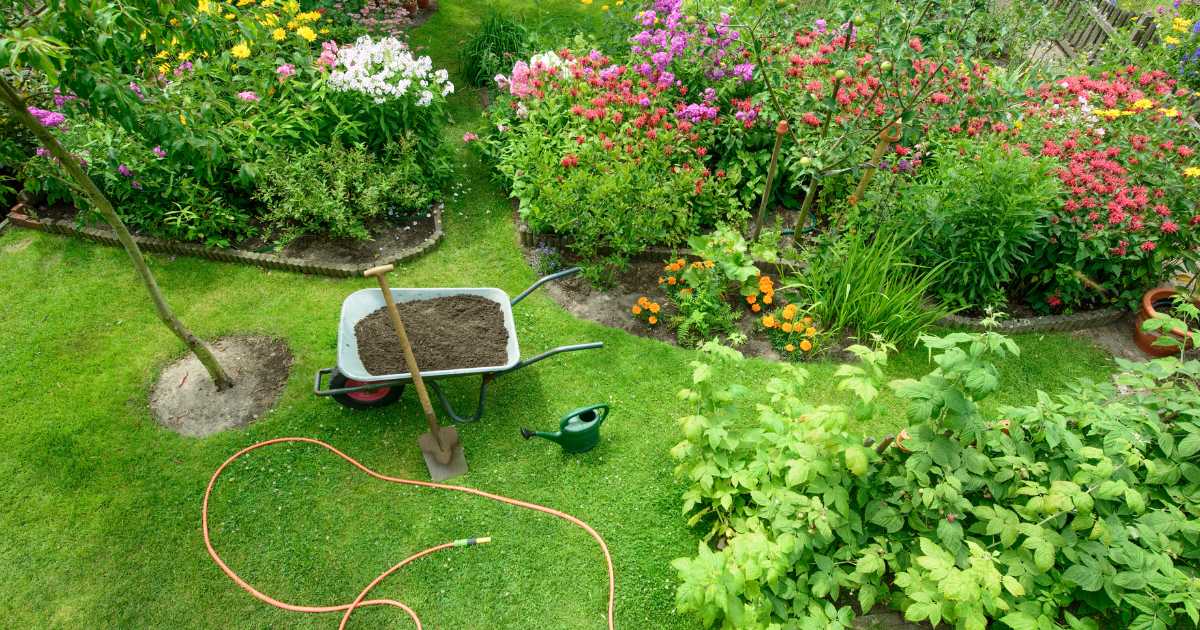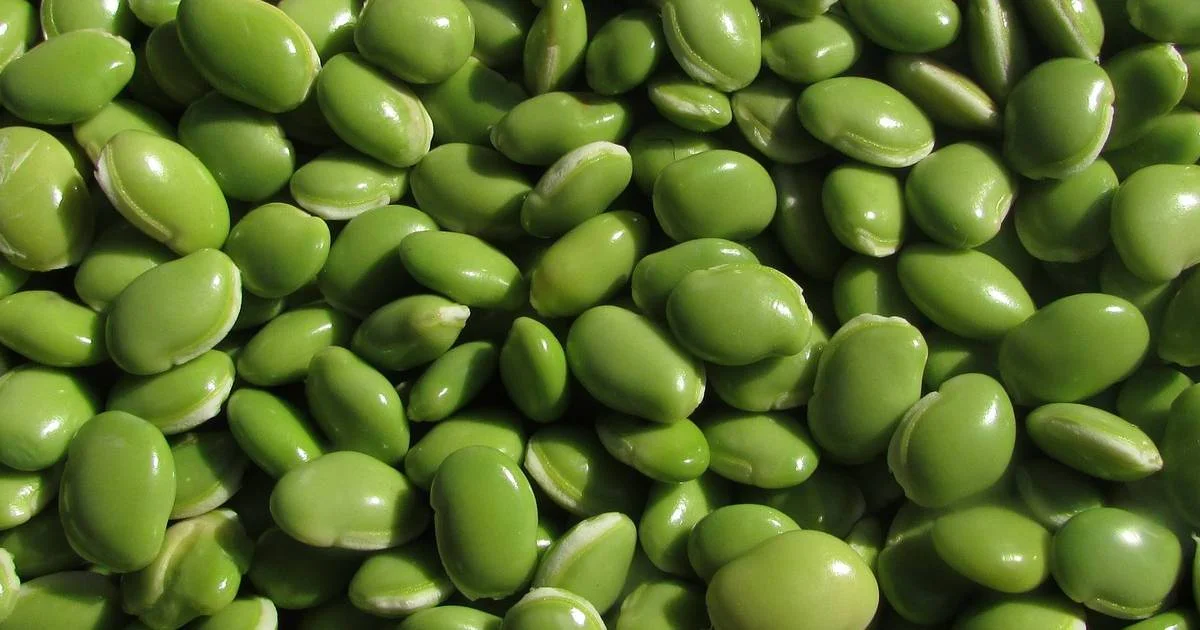Protective structures give you some wiggle room when it comes to planting seeds or seedlings in the garden. Covers can push back the spring planting season by weeks (row covers, cloches, mini hoop tunnels) to months (polytunnels, greenhouses, domes, cold frames) and extend the harvest into late autumn or winter by the same time frame. In her book, Growing Under Cover: Techniques for a More Productive, Weather-Resistant, Pest-Free Vegetable Garden, gardening expert and author Niki Jabbour highlights the many benefits of using protective covers to plant earlier, eliminate pests, and harvest a healthier, heartier bounty year-round.
I find it’s easiest to divide the year into three growing seasons: warm season, cool season, and cold season. The span of time between the last spring frost and the first autumn frost is the warm season, spring and autumn are the cool seasons, and winter is the cold season.
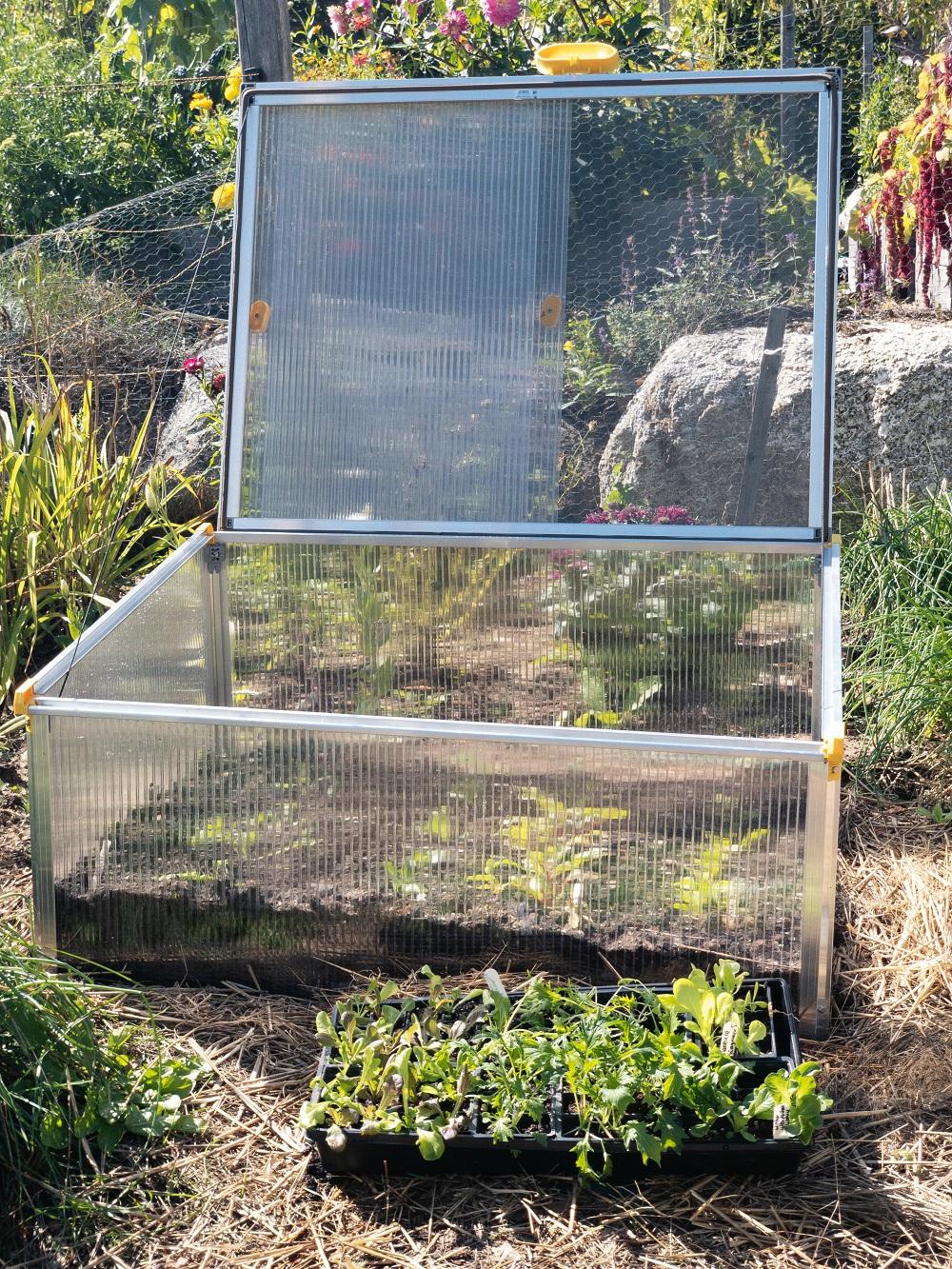
Exactly how much earlier you can plant beneath a cover will depend on the type of cover and its materials. Twin-wall polycarbonate, which tops my cold frames, is more insulating than a single layer of polyethylene, for example. I seed spinach in a cold frame in February, while my spring garden spinach isn’t seeded until late April, giving me a 2-month head start. That early planting also applies to my polytunnel. Just as we’re finishing up harvesting winter crops in February, new seeds for carrots, beets, Asian greens, and peas are sown in the open spaces left behind.
But it’s not always about the cold-season veggies — garden covers allow you to plant warm-season crops like tomatoes, peppers, and cucumbers weeks earlier, too. My tomato seedlings are set out in my unheated polytunnel in early May (about a month earlier than unprotected garden tomatoes) but could be planted even earlier if I used a small heater for the nighttime temperature dip. Without additional heat, I keep row covers handy for those May nights when the temperature drops below 50°F (10°C).
Days to maturity. To figure out timing, make a list of which crops you want to grow and how long they take to mature. Each crop has a specific time frame it needs to go from seed or transplant to harvest; this information is listed as “days to maturity” in seed catalogues.
For example, ‘Provider’ bush bean takes 50 days to go from seed to harvest. It is a warm-season vegetable and can’t be seeded until after the last spring frost. ‘Sungold’ tomato takes 57 days to maturity, but that time frame is from the transplanting date, not the seeding date. Read seed catalogs carefully to be sure you’ve got the right planting information.
Choose the season. The next step is to decide when you want to grow the crops. Warm-season crops need to be grown between the last spring frost and the first fall frost. My growing season (the days between the frost dates) is approximately 140 days so I need to choose crops that mature in 140 days or less.
Using Covers to Get a Jump Start on Spring
Warming soil with plastic sheeting. There are plenty of vegetables that can be direct seeded in garden beds once the soil temperature is above 45°F (7°C). The list includes carrots, beets, arugula, spinach, peas, and radishes. Yet spring soil, especially soil that is saturated with cold or icy water, takes longer to warm up. A savvy gardener can help speed up the warming-up process with a plastic sheet laid directly on the bed.
There are several ways to prewarm the soil. The easiest is just to cover the soil with a clear or black plastic sheet for 12 to 14 days before you intend to plant. Lay the sheet on the soil surface and weigh it down with rocks or pin it with garden staples to keep it secure on windy days. Leave it on day and night until you’re ready to plant. Once you remove the plastic, you’ll likely notice some weed growth. That’s okay! Pulling those weeds now means fewer weeds in the future.
Use plastic sheets to prewarm soil before planting out warm-weather crops like melons, eggplants, and peppers. Setting these seedlings in the garden while the soil is still cold can damage or even kill the plants and prewarming is a simple way to boost success, especially in northern climates like mine. Once the plastic sheet is removed and the bed seeded or planted, you can follow up by erecting a quick mini hoop tunnel over the bed as extra insurance against the uncertain spring weather.
Starting seeds outside, under cover. Whether you prewarm your soil for seeding or just allow it to warm up on its own, you can still use a variety of covers to start seeds earlier. I generally use mini hoop tunnels, row covers, and cloches to speed up my spring garden seeding. Salad greens like lettuce and spinach, which are normally direct seeded in the open garden in late May in my region, can be sown in beds 8 to 10 weeks earlier with a mini hoop tunnel covered in polyethylene. Row cover is less insulating but can be used to cover hoops or laid directly on beds to permit planting 4 to 6 weeks earlier. Vent mini tunnels or remove fabric covers during the day when temperatures are above 45°F (7°C).
Cloches can also shelter seeds, but work best in containers or when small clumps or seeds are planted. With their smaller size and often round or square shapes, they’re harder to use when seeding rows or bands in garden beds. That said, cloches are still super handy in spring, but I use them more for protecting individual seedlings.
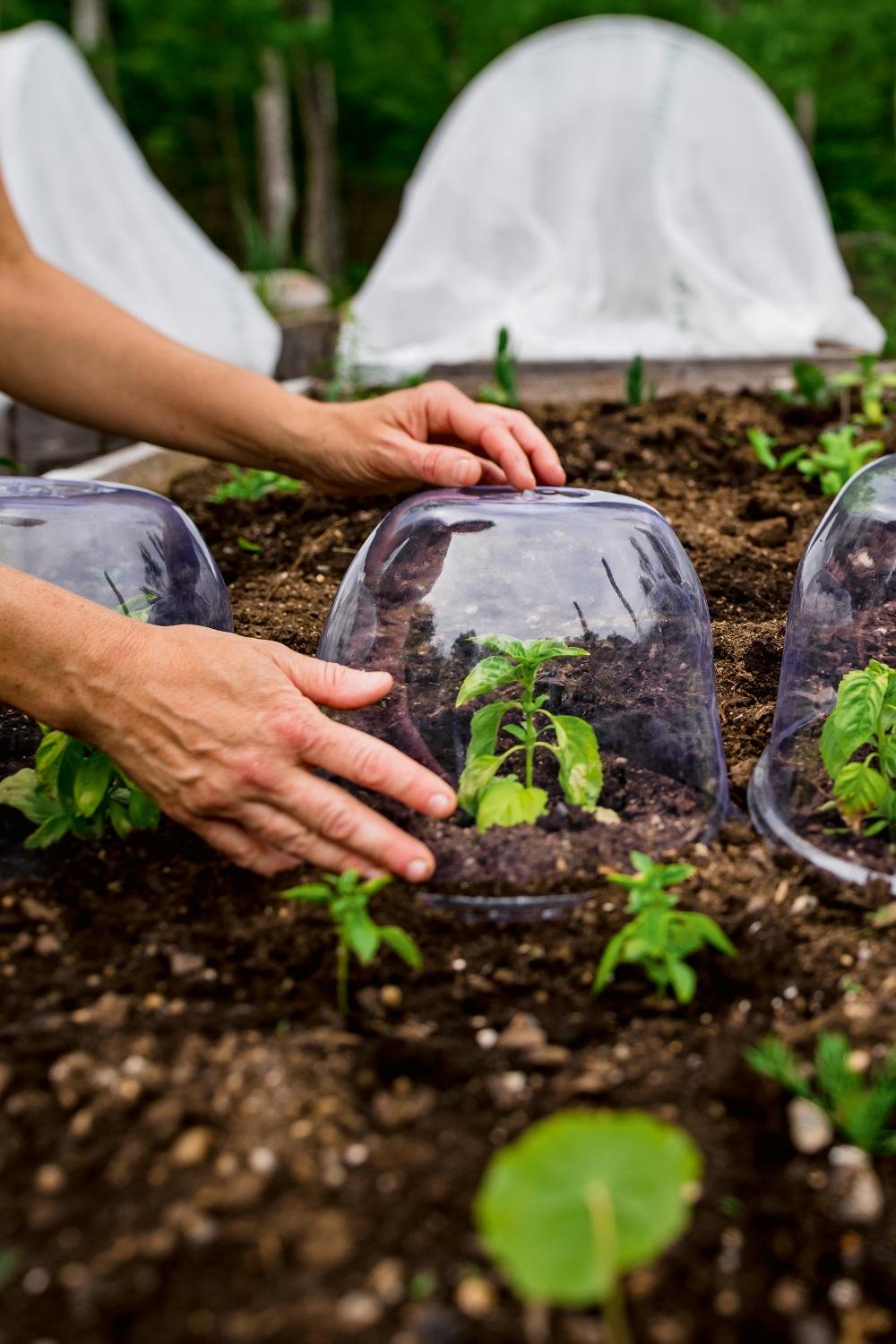
Using Covers to Help Harden Off Seedlings
Seedlings started indoors under grow lights have a pretty good life: no excessive heat or cold, ample food and water, and no insects or deer munching on their leaves. As a result, they haven’t had to develop their horticultural suit of armor: the waxy leaf cuticle layer that protects them from sun and wind. “Hardening off” is the process of gradually introducing these pampered seedlings to outdoor growing conditions, so that they have time to build up their armor. It should take 5 to 7 days.
What if you’re planting seedlings under a garden cover like a polytunnel or cold frame, and not the open garden? Do you still need to harden them off? The short answer is “yes.”
If I planted my indoor-grown seedlings directly into the polytunnel beds, they would quickly show signs of shock; wilting, bleached leaves, or curled foliage.
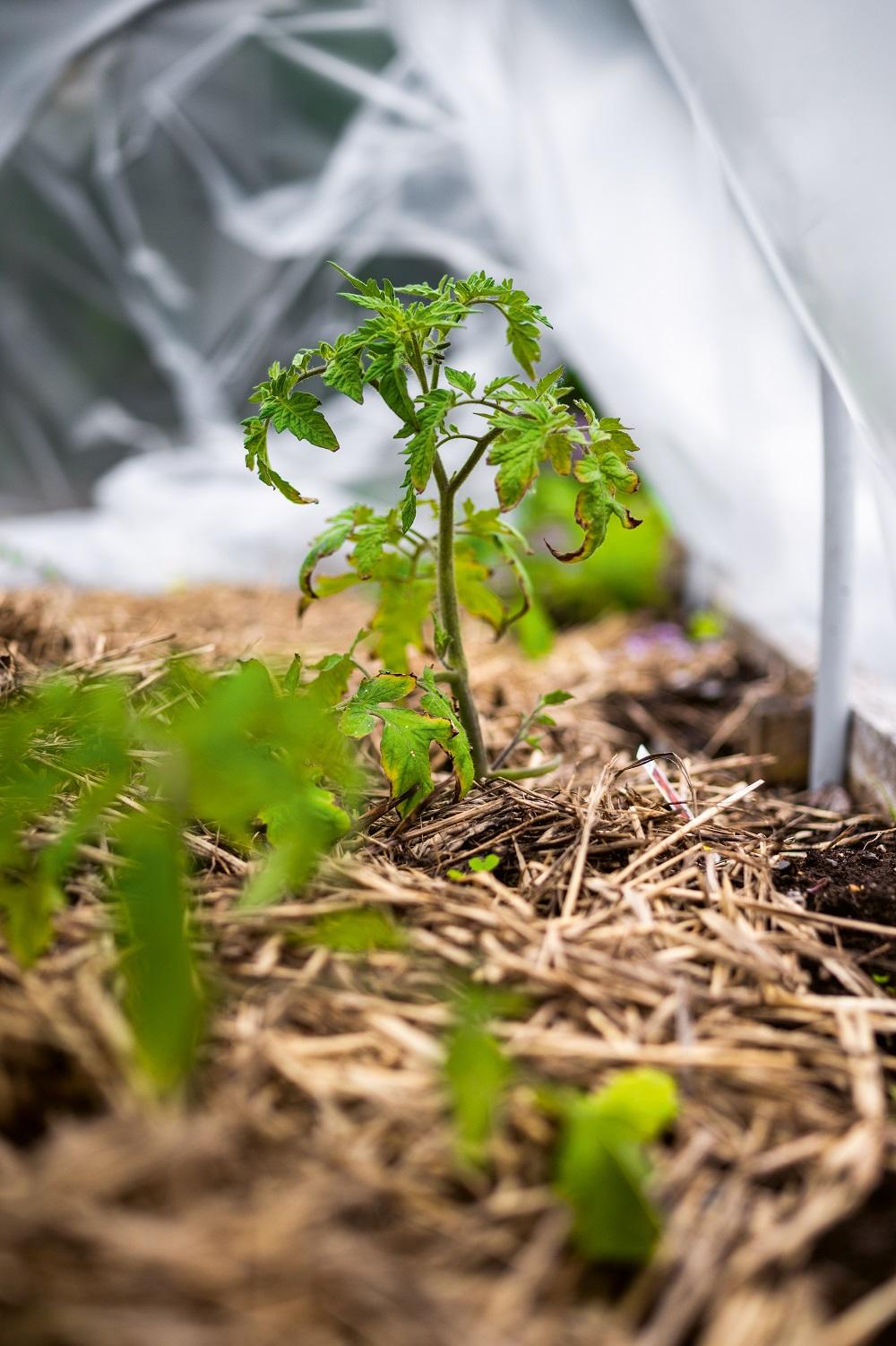
Garden covers can help plants adjust during the hardening-off process. Sometimes real life can come as a shock to plants that have been pampered indoors under a grow light. There are the up-and-down temperatures, gusty winds, downpours, hail, and munching insects and mammals to contend with. Use garden covers like mini hoop tunnels, row covers, shade cloth, cold frames or even a polytunnel to make the transition less stressful on your plants. They’ll provide shelter from inclement weather and pests while the seedlings adjust to life in the garden.
Excerpted from Growing Under Cover © by Niki Jabbour. Used with permission from Storey Publishing.
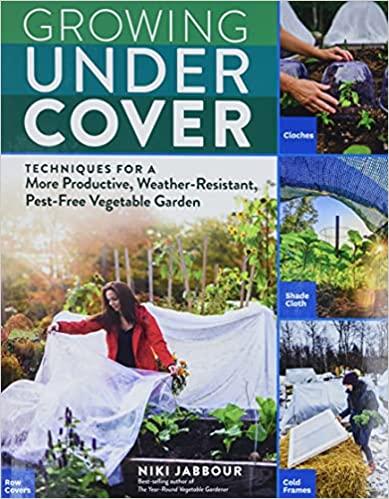
Niki is the award-winning author of Niki Jabbour’s Veggie Garden Remix, The Year-Round Vegetable Gardener and Groundbreaking Food Gardens. Her work is found in Fine Gardening, Garden Making, Birds & Blooms, Horticulture and other publications, and she speaks widely on food gardening at events and shows across North America. She lives in Halifax, Nova Scotia, and is online at nikijabbour.com.

